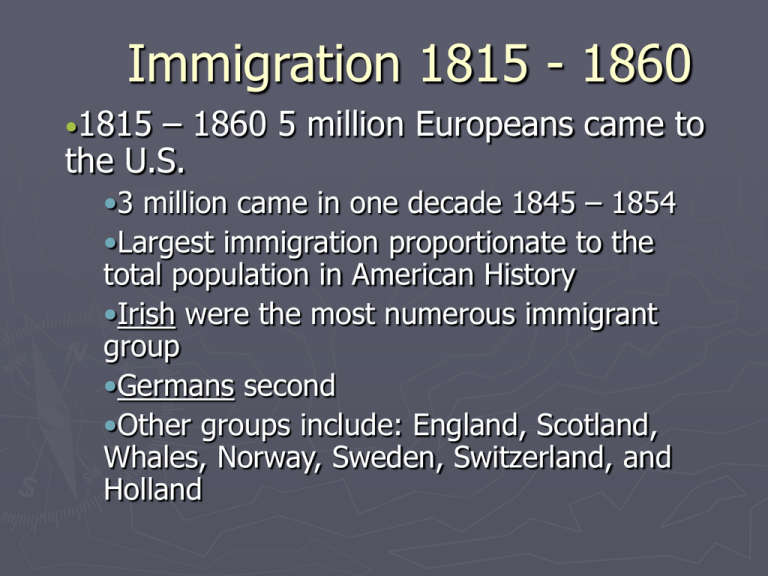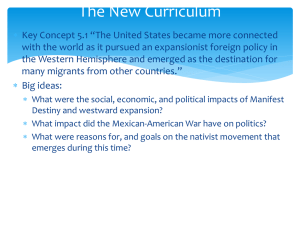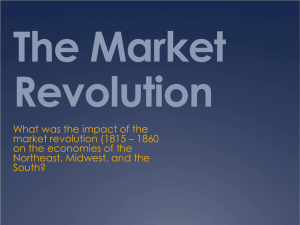Immigration 1815 - 1860
advertisement

Immigration 1815 - 1860 •1815 – 1860 5 million Europeans came to the U.S. •3 million came in one decade 1845 – 1854 •Largest immigration proportionate to the total population in American History •Irish were the most numerous immigrant group •Germans second •Other groups include: England, Scotland, Whales, Norway, Sweden, Switzerland, and Holland Immigration 1815 - 1860 •Expectations •Why did most immigrants come to the U.S. •Religious freedom •Mormons recruited in the slums of England •Emigrants from Norway were Quakers fleeing persecutions by Lutheran clergy •Largest numbers of immigrants had come to the U.S. to better their economic situation •Many expected utopia •Travel to U.S. was terrifying •Farming in U.S. lacked the social aspects that European farmers were accustomed to having. Immigration 1815 - 1860 •Expectations •Ports of departure were often used by custom. Each country would tend to use one port more than another. Therefore, immigrants entering the United States would enter into the same port from the same country most of the time. •Irish – New England, New York, Pennsylvania, New Jersey •Germans – New Orleans, but then settled in the upper Mississippi and Ohio valleys, (Illinois, Ohio, Wisconsin, and Missouri) •Settlement patterns characterized immigrants Immigration 1815 - 1860 •Expectations •Germans and Irish tended to concentrate in cities forgoing farming •Cities need strong labor forces •Irish built the houses, new streets, and aqueducts that were changing urban America •Irish also built canals and railroads •Cities offered social aspect that farming lacked for the immigrant Immigration 1815 - 1860 •Expectations – The Germans •Diverse group •Bavarians, Westphalians, or Saxons rather than Germans. •Could be Catholic, Protestant, most often Lutherans and Jews. •Came from a wide range of social classes and occupations •Mostly farmers, some were professionals, artisans, and trades people. Immigration 1815 - 1860 •Expectations – The Germans •Heinrich Steinweg – Henry Steinway •Steinway pianos •Levi Strauss – Levi’s •Bound together by common language •Stayed in German neighborhoods •Climbed social ladder in their on ethnic communities •Schools, volunteer organizations, newspapers, etc Immigration 1815 - 1860 •Expectations – The Germans •Economic self-sufficiency conspired with the strong bonds of their language to encourage a clannish psychology among the German immigrants •Americans admired industriousness •Americans resented their economic success •Americans disdained their clannishness.









